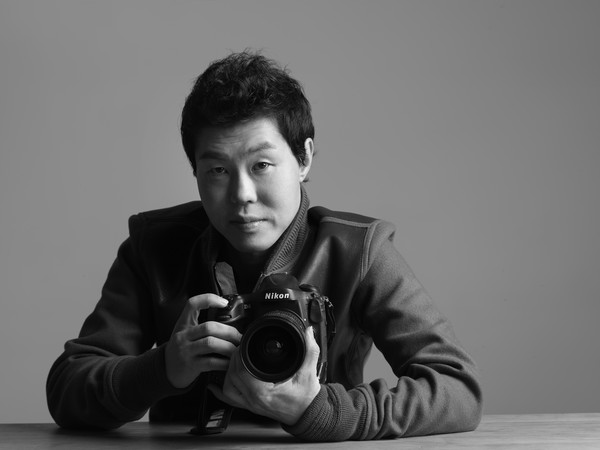
Façade[1], a representative work of artist Han Sungpil, who graduated from the Chung-Ang University (CAU) Department of Photography, does not mean just imitation. It comprises his creative works with the concepts of virtual and reality, asking us which one to believe. Let's get to know the artist, Han Sungpil, who practices art with a focus on photography, video, and installation under the themes of environmental issues, originality and imagination, history, and the relationship between all of these.
#Starting the Interview
1. Please introduce yourself to CAU students and the readers of CAH.
Hello. I’m Han Sungpil, a visual artist who works pictures, videos, and installation arts.
2. What was the biggest turning point in your life at CAU?
In my life as a CAU student, the turning point is the backpacking trip when I was a junior. In the past, since the internet wasn’t big as it is today, I had many new experiences while traveling. So, my experience of going abroad was an important turning point for me. I traveled through Europe to the Southeast, and then I realized that it is very important to experience cultural diversity as I met people from various cultures while traveling abroad.
3. After graduating from CAU, you worked for about 4 years to raise money to study abroad. What did these four years mean to you?
After graduating from CAU, I worked in the field of marketing, not photography. What I learned while working at that company gave a meaningful impact on my life and that experience helped me a lot as a photographer.

#About Works of Han Sungpil
4. What is the reason you used a faded blue color instead of the bright blue in your work My Sea?
My Sea is a work that shows my memories of seeing the sea when I was 15, so I wanted to make it fade rather than be a clear picture. Therefore, when I made this, I used a long exposure[2] for the shot by opening the aperture for a longer time to give a blurry vibe to the work.
5. “Façade” is a work that contains your subjective views beyond the dictionary meaning. What exactly does a façade mean to you?
The word “Façade” is French, and a term frequently used in the field of architecture. The reason I chose the title Façade is due to the subject of my work. A long time ago in Europe, the façade technique was often used in buildings, because the function of the façade makes the buildings look beautiful. This is the reason why I chose the title for the Façade. While working on this, I wanted to show the phenomena of the current era, beyond just photos. For example, like plastic surgery, I used a screen to make the building look more beautiful, like for those who want to resemble someone other than themselves. To me, the Façade has such an implicit meaning.
6. Which of your works was the most difficult to make?
All my work is difficult to make. But If I had to pick one, it would be the work called Harmonious Habana in Cuba. When I installed this work in Cuba, it was difficult to progress the work because Cuba and Korea did not have any diplomatic relations. So, the process of making and installing it were difficult. Also, there were various administrative and political problems in Cuba, so I couldn’t be sure whether I would be able to hold an exhibition in Cuba. Fortunately, the Havana Biennial in Cuba, took an active role in making the exhibition possible. Another problem is that people often don't work well since Cuba is a communist country. Before going to Cuba for work, I made arrangements in advance, but when I arrived in Cuba, nothing had been done. There was a deadline, but even basic things such as installing a frame in the building were not done. It was also tough to make people work. For this reason, working in Cuba was the most difficult experience due to administrative issues and various cultural differences. However, it was the most meaningful work to me as it was the most difficult one.
7. You emphasized the keywords of “duplication” and “originality” on the Façade. These days, technologies such as cloning are gradually emerging. What do you think about the originality of these days?
It is related to question 5. In my opinion, everyone should think about originality. In the past, originality meant real things. There are people in the world who want to be like someone else, not themselves. For example, there is cosplay where people imitate a fictional character rather than real person. As such, the meaning of analog and originality is changing from the past to the present. I hope that in my work, many people can develop their ideas in various ways, rather than looking for the right answer.
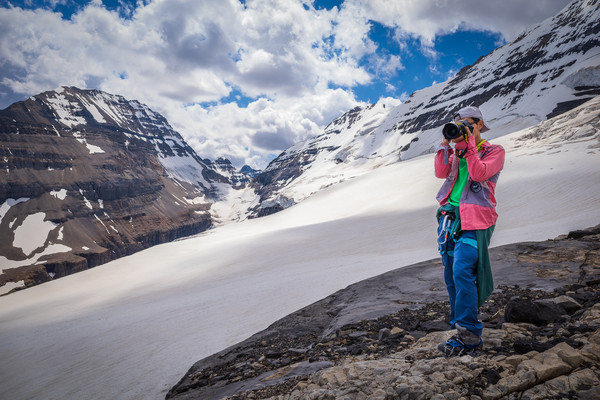
8. At the 2015 Havana Biennial, you exhibited an image of East and West Three-story Stone Pagodas at the Gameunsa Temple Site. Is there any special reason for choosing that image?
There are two reasons for choosing the East and West Three-story Stone Pagodas at the Gameunsa Temple Site (Stone Pagodas at Gameunsa Temple Site). First, the Stone Pagodas at Gameunsa Temple Site were built for peace and stability during the Unified Silla Dynasty. When Cuba and Korea were about to make a diplomatic agreement, I thought that peace and stability were crucial. So, that is why I chose Stone Pagodas at the Gameunsa Temple Site. Second, Cuba has a South American culture, because many people were taken as slaves from Africa because of the sugar cane plantations. Also, the Cuban buildings are Spanish-style European buildings. In addition, there was a Korean wave at that time. So, because various cultures coexisted in Cuba, I wanted to add another layer of “Korea” to Cuba.
9. You did exhibitions related to the polar regions. Why did you go to the South Pole and the North Pole, which are extreme areas?
I've always dreamed of going there. It was my dream to go to an unknown world as an artist. It is so beautiful to go to unknown places as an artist! When many people think of the South or North Poles, they come up with two things: The first is the coldness and ice of that region, and the second is penguins or polar bears. When I went to the poles, people asked me a lot if I saw polar bears or penguins. But I was more interested in something other than penguins or ice. In the past, when explorers discovered the poles, they struggled to get enough energy to survive there. So, I wanted to express their history through my works.
10. In 2016, you made a meaningful relationship with Yeoncheon through the “Innocence” exhibition. Why did you choose Yeoncheon?
When relations between North and South Korea were not good in the past, in 2015, some missiles were dropped on Yeoncheon. I had been contacted by a project related to the security exhibition hall in Yeoncheon which no longer exists. In the security exhibition hall, people were able to see some parts of North Korea. As a Korean artist, I thought it was important to express the relationships between North and South Korea through my art. So, I wanted to show a metaphor for this by combining the security exhibition hall with my artworks. Ironically, although Yeoncheon is an area with many collisions, still quite a bit of nature remains. The specialty in Yeoncheon is ‘basalt’, which can also be found on Jeju Island. Tens of thousands of years ago, a volcanic eruption occurred in the area where Ori Mountain is located in North Korea, resulting in a change in the topography. I think it's important to show the regional similarities between North and South Korea in photos.
11. On July 1st, 2022, you held your first solo exhibition in Mexico under the name of ‘Under the Surface’. CAH wonders what the local reactions to this exhibition were.
I have worked several times in South America, but this was my first solo exhibition in Mexico. Many people, including the media, came to the opening of the exhibition, and their responses to it were good. Mexico is also very interested in the Korean Wave, but among the Korean Wave, contemporary art is not introduced much compared to other fields, so it seems that people were curious about how Korean artists work in the fine arts area rather than popular culture. Through this exhibition, I was able to interact with many Mexican audiences. Also, the Korean Cultural Center in Mexico connected me to Korean artists, so I was able to meet many Korean artists there. It was a pleasure to have good conversations with them.
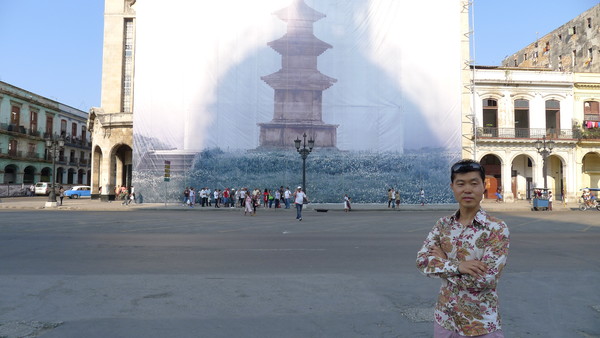
12. You said that you felt the charms of the Rocky Mountains while working in Canada. What motivated you to start working on the <polar heir> series, which mainly shows the disappearing glaciers of the Rocky Mountains?
I went to the Canadian Rocky Mountains once in 2014, and I started working in Canada in earnest in 2020. Most people think of Canada as a cold country, and in Canada, the Rocky Mountains are a very popular attraction. However, several experts predict that many of the glaciers in the Rocky Mountains will disappear by the year 2100. After I heard this, I wanted to continue working on the Rocky Mountains, by seeing and showing the conflicting points on the issues of aesthetics and environment.
13. You awaken awareness of environmental issues by showing environmental problems that people cannot see with their naked eyes, such as ecological crises and global warming, through photos. As technology advances, various environmental problems may inevitably arise. What kind of individual effort do you think is necessary to solve these problems?
I think the answer to this question is set in stone, especially in terms of individual efforts. As the various types of media tell you, people need only a little bit of resources and to make an effort to solve these kinds of problems. Although most people are aware of the seriousness of global warming, some still do not believe that the Earth is warming and the glaciers of the polar regions are melting. This part of their thoughts is difficult to persuade, but I try hard to change people's perception of environmental issues and suggest positive directions through my pieces of art. I think the most important part of solving problems is to change the perception of various environmental issues.
14. While working in the polar regions, you took pictures with traces of humans, not the unknown world without any touches by humans. What do you want to emphasize the most in the photos of polar regions?
In fact, from my point of view, there are very few unknown places in the world that have no touch of humans unless it is a place like the deep sea. The meaning of human traces is the efforts and greed of humans, so I wanted to suggest the energy, struggle, power, and achievements of people in the polar regions through the photos. People may think that in the polar regions, there is only snowy nature , but I wanted to show the remaining human traces such as the buildings.
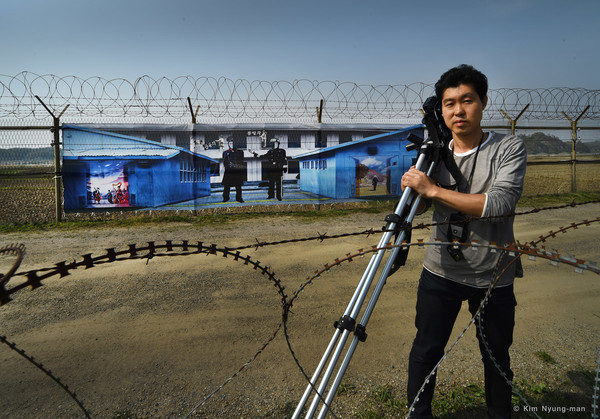
15. Which landscape do you find more attractive: the vastness of nature without human traces or the remaining human traces in the time of nature in <Deception Island>?
In my opinion, landscapes with human traces are more attractive. Of course, from nature without human traces, we can feel the vastness and sublimity, but I think the various thoughts and messages that human traces can give us are hugely important. Some of the people say that what humans seek from nature is romantic, but I believe that such an action is rather representing the greediness of humans. I want to talk to people about these topics through my work.
#Concluding the Interview
16. Photographers may take pictures of a variety of subjects, but many photographers have one major theme they pursue. What major theme do you pursue as a photographer?
As I take numerous photos, I think the main theme that comes to my mind is ‘Human beings and History’. I think it is meaningful to constantly explore human beings and history and to think deeply about those themes. By photographing these processes of thought, I feel very rewarded.
17. Do you have any desire to try a new field as an artist besides environmental photography? If yes, what field?
Aside from environmental photography around human impacts, the field I am starting recently is ‘furniture’. I have a lot of interest in making furniture and other three-dimensional spaces, so I want to learn more deeply and challenge myself in this field as well.

18. As a photographer, what do you think photography means to people?
I think this is a very philosophical question. In the past, the meaning of photography to people was to reproduce past scenes and recall the past. But now, things that are considered artificial thanks to software like Photoshop which also added to the meanings of photography that represent the past. I think that changing the meaning of photography expands the world of art so people can be more interested in it.
19. What is the most important value that you pursue in your life?
The value I pursue in my life is “To do what I love and what I want to do”. I like what I do as a photographer. So, that is why I think I am doing an important job of visiting many countries and sharing various experiences, realizing many ideas, and sharing them with viewers.
20. Please give your advice and support to CAU students who are working hard towards their dreams.
Dreams may or may not come true in the end. But if you want to achieve something, even if you can't do it right now, you don't know how you will be able to find what you like in the future. Therefore, I want to tell Chung-Ang University students that they should work hard towards their dreams and, even if they do not come true right away, keep trying to find their dreams in different and various ways later.
Through this interview, we were able to confirm the perspective of photographer Han Sungpil on humans and history. As a photographer, he does not simply frame landscapes but wants to inspire his viewers to think deeply about what can be simply overlooked through a single piece of artwork. CAH supports him as he is making a good impact on people by making art and runs enthusiastically towards his dream.
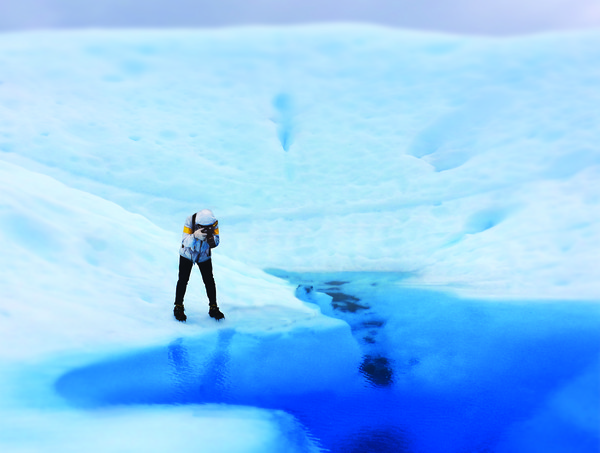
[1] Dictionary definition: the front of a building, especially a large of attractive building.
[2] Using a long-duration shutter speed to sharply capture the stationary elements of images while blurring, smearing, or obscuring the moving elements.

